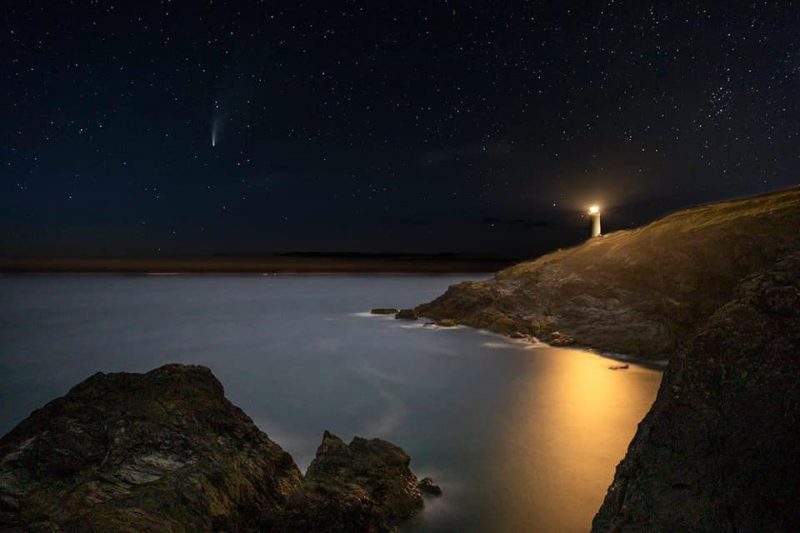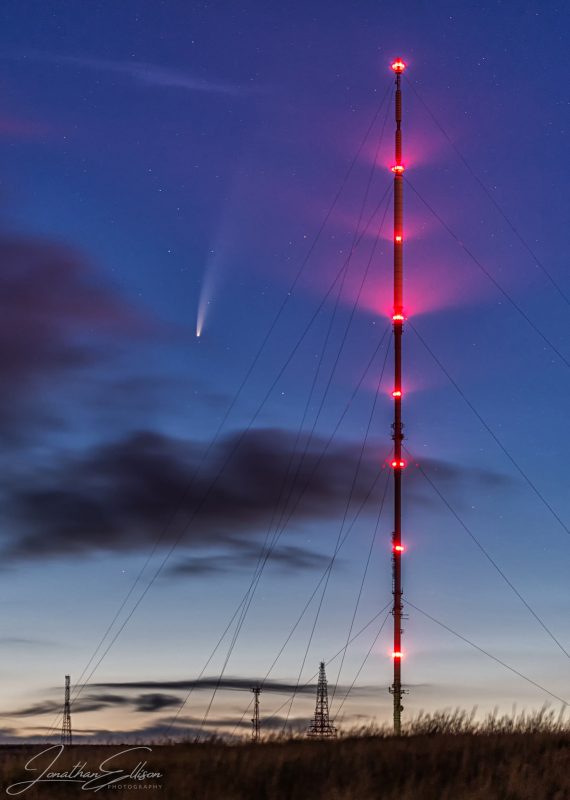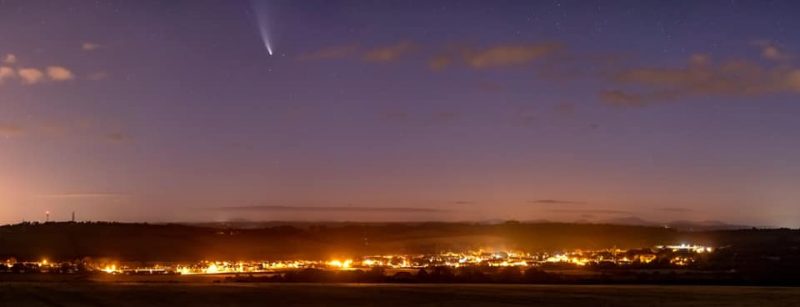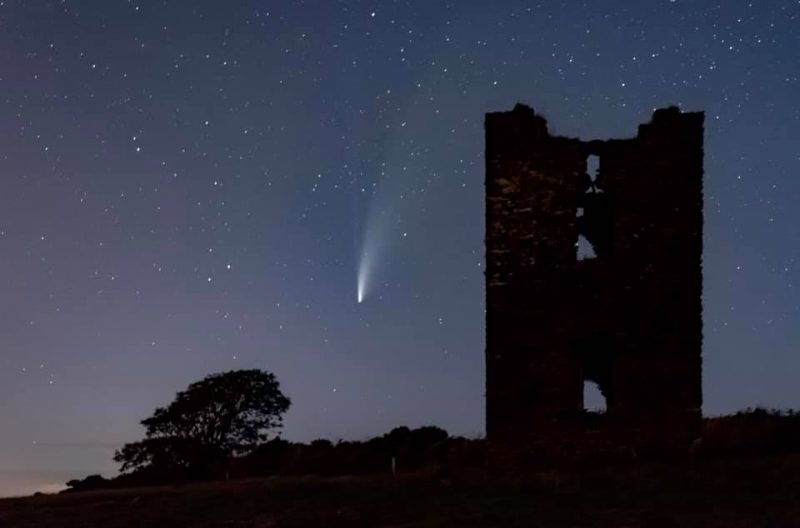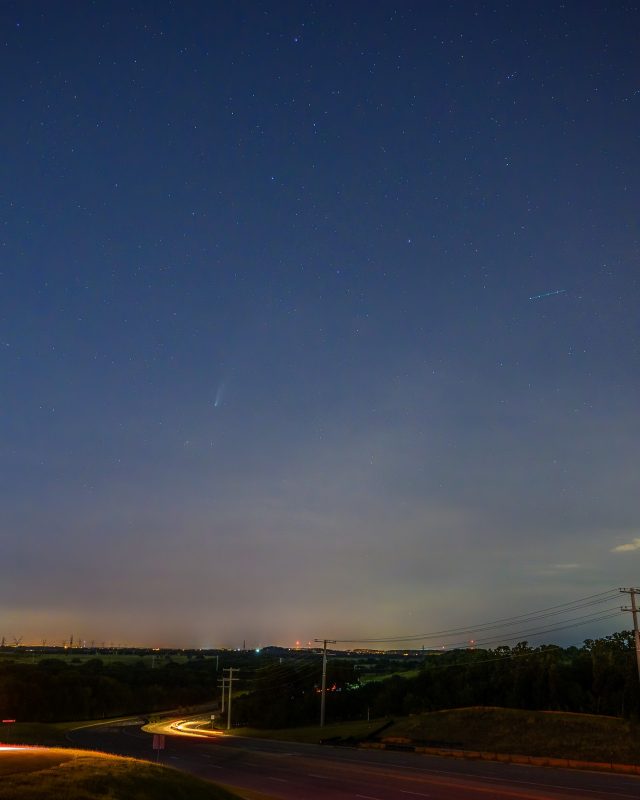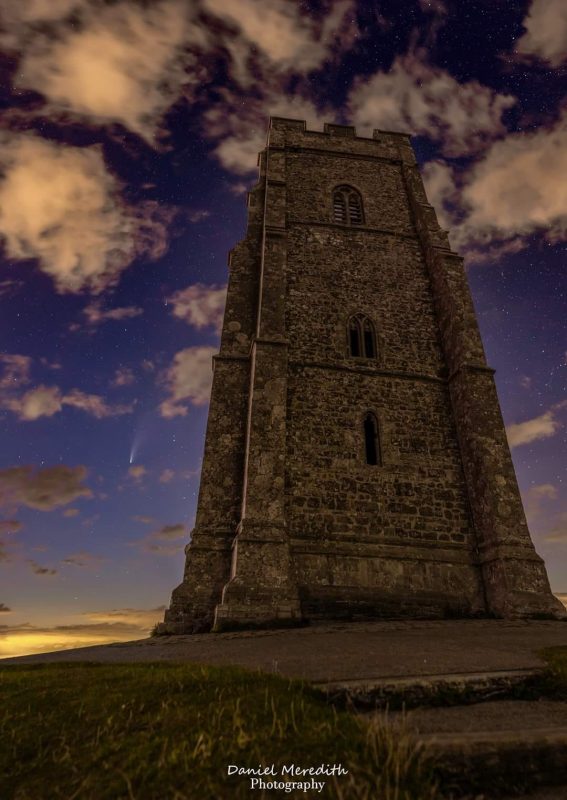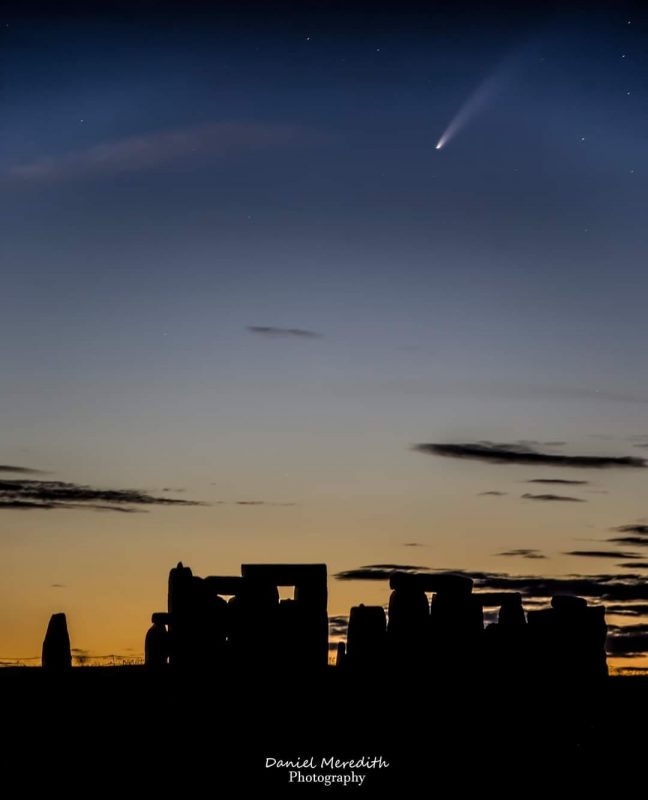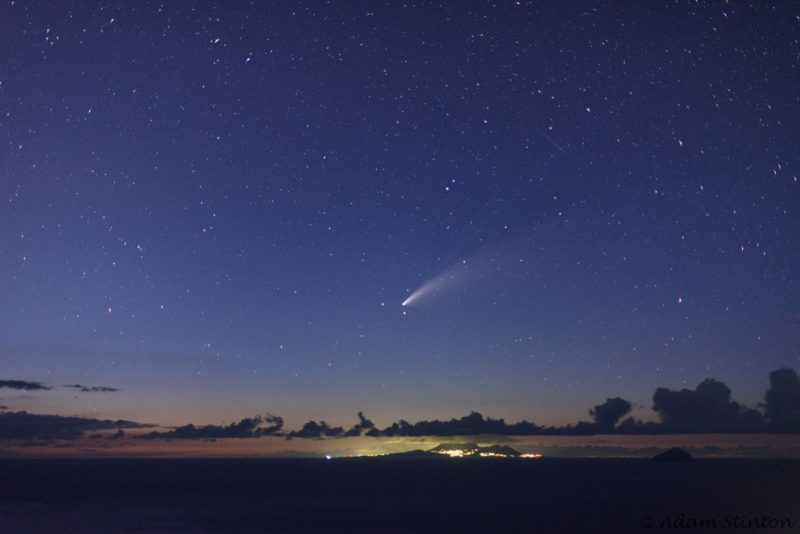Home » Inspiration » Landscape » The Best Photos of Comet Neowise by Nature TTL Readers
Comet Neowise has spent July cruising past the earth at a comfortable 144,000 mph. Officially known as C/2020 F3, the comet has recruited a new generation of stargazers, and seen many amateur and professional photographers reaching for their tripods.
It won’t be seen again for another 6,800 years. So, to celebrate this once in a lifetime event, we’ve collected together some of the best photos of Neowise taken by the Nature TTL community.
Check out these fantastic astrophotos from our talented audience! And remember, if you want to learn more about astrophotography, make sure you download our eBook The Ultimate Guide to Astrophotography
Trevose Head, Cornwall, UK
Photo by Lee Humphreys How it was taken:
“10 shots for the sky stacked (to reduce noise) and a single image for the foreground blended in Photoshop.”
Meteora, Greece
View this post on Instagram
❝︎Comet NEOWISE above Meteora, Greece № 2❞︎ C/2020 F3 or “Comet NEOWISE” is viewed above the geologically unique Meteora, Greece in the evening, one and a half hours after sunset. The comet was shot on July 16, 2020 at 22:32’ (local time), when it was viewed at an altitude of 10° 04’ above horizon and an azimuth of 326° 17’. The comet’s visual magnitude was 2.86, its distance from Earth was 0.75 AU, whereas its distance from the Sun was 0.49 AU. The impressive and lofty rock formations captured are collectively called Meteora: The sandstone megaliths’ height varies 1,000-2,067 ft (300-630 m). The rock masses were formed 60 million years ago, are geologically unique and listed in UNESCO world heritage sites. This photograph was made by stacking 25 light frames by Starry Landscape Stacker (version 1.8.0; algorithm: Mean Min Hor Noise). All 25 shots were captured by using the very same camera settings: Canon EOS M50 EF100-400mm F4.5-5.6L IS II USM @ 100mm ( 35mm-efl: 160mm ) ISO 3200, F/4.5, 3.2 sec Coordinates of camera position: 39° 40' 14.082" N 21° 39' 41.694" E #comet #NEOWISE #C2020_F3 #astrophysics #space #astrophotography #astronomy #photography #Papachristos #Canon #Meteora #Greece #UNESCO #rockformations #Kalampaka #foregroundinterest #evening #geology #sky #stacking #starrylandscapestacker #nature #celestial #object #beauty #national #geographic #NatGeoYourShot #NatureTTL #ig_meteora
A post shared by I.C. Papachristos, MD, Ret. (@ic_papachristos_md) on Jul 17, 2020 at 11:31am PDT
Winter Hill, Lancashire, UK
Photo by Jonathan Ellison How it was taken:
Single 3-second exposure. f/2.8, ISO 400 @ 105mm.
Chapman’s Pool, Dorset, UK
Cloyne, Co Cork, Ireland
Photo by Jim O’Neil How it was taken:
“9 image panorama. Each image was 8 seconds long at ISO 1600 f4 using a 110mm focal length.”
Photo by Jim O’Neil How it was taken:
“One shot at 42mm focal length, ISO 1600, f2.8, 8secs, at Castle Hill”
Anaga Massif, Spain
North of Dallas, Texas, USA
Photo by Shiva Shenoy How it was taken:
“Single shot, 24mm, f4, ISO 1600, 5sec”
Knepp Castle, Sussex, UK
Cregennan Mountains, Snowdonia
Photo by Daniel Meredith Glastonbury Tor, UK
Photo by Daniel Meredith Stonehenge, UK
Photo by Daniel Meredith Dartmoor National Park, UK
Montserrat, West Indies
Photo by Adam Stinton How it was taken:
“Comet Neowise over the twin island state of St Kitts and Nevis (centre) and the uninhabited island of Redonda (right). Photographed on 18 July 2020, from Montserrat, West Indies. D750 | 50 mm f/1.4 | 10 sec at f/1.4, ISO1600. Single image”.
Debsconeag Lakes Wilderness Area, Maine, USA
View this post on Instagram
Colors of NEOWISE / Debsconeag Lakes Wilderness Area. Ever since seeing images of Comet Lovejoy back in 2011, I'd been dreaming about being able to photograph a comet someday. I got some images of Comet 46P/Wirtanen in 2018, and took some pretty terrible photos of Comet PANSTAARS way back in 2013, but neither of them were the spectacular comets with huge tails that I had been hoping for. Needless to say, I was pretty excited when Comet NEOWISE showed up and survived its brush with the sun and became a pretty amazing comet. While I definitely wish that it would stick around longer so I can get more images with it, I'm pretty happy with the images that I've been able to get. For this image, rather than bringing the white balance down to give the comet more of a white look, I left the white balance closer to daylight to retain the natural golden hues of the dust tail. The blue of the gas tail came out nicely, and I even got a hint of green from the coma. I definitely can't wait until the next one, and hopefully it's not too far away. . . Nerd specs: Nikon D500 / Sigma 150-600 C iOptron SkyTracker 41 images stacked in Starry Sky Stacker and edited in Photoshop ISO 10,000 / 15s (my tracker wasn't in the best of moods) / f/6.3 / 165mm . . #cometneowise #neowise #comet #astronomyphotography #nightsky #astro_photography_ #nightphotography_exclusive #nightscaper #maine_igers #exploremaine #conservemaine #maineisgorgeous #mainesucks #visitmaine @visitmaine #onlyin207 #fortheloveofmaine #naturettl #mainetheway #bestofthepinetreestate #debsconeaglakeswildernessarea #katahdin #yourshotphotographer #nikonnofilter #wilderness #universetoday
A post shared by Nathaniel Child (@nathaniel_child) on Jul 27, 2020 at 7:24am PDT
If you would like to share your photos with us, you can follow us on Instagram @nature.ttl and use #NatureTTL , or join the Nature TTL Wildlife and Landscape Photography Group on Facebook.



